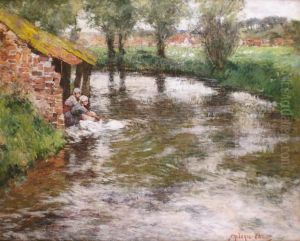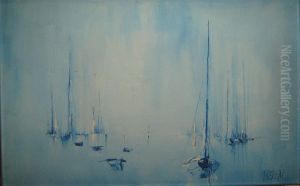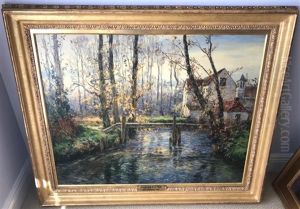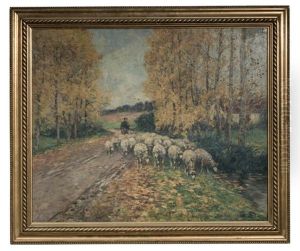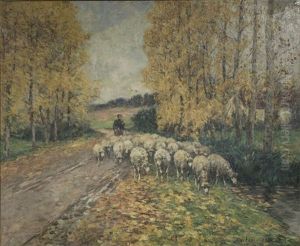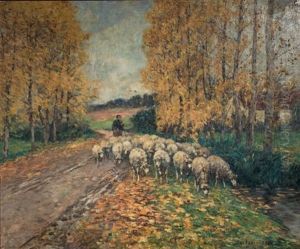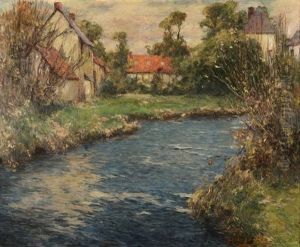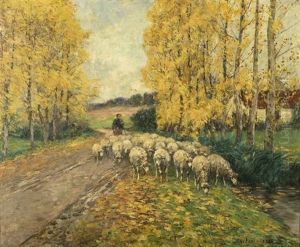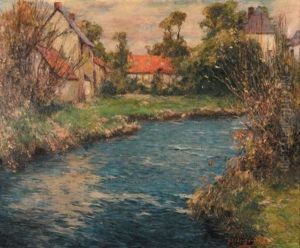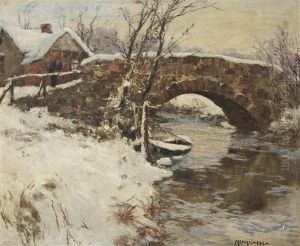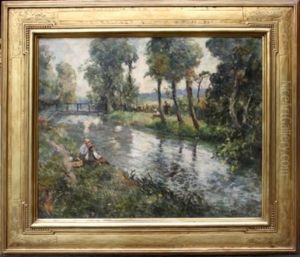Frederic Ede Paintings
Frederic Ede was a British-born Canadian artist known for his landscape paintings. Born in 1865 in London, England, Ede demonstrated an early talent for the arts which led him to pursue his artistic education. His initial studies in art began in England, but it was after his immigration to Canada that he truly began to develop his career and unique style.
After moving to Canada in the late 19th century, Ede settled in Quebec, where he was particularly drawn to the scenic landscapes of the Saint Lawrence River and the rural surroundings. His work during this period began to reflect the influence of his new environment, with a focus on the natural beauty and tranquility of the Canadian landscape. Ede's paintings often captured the changing seasons, the serene rivers, and the bucolic countryside. His approach to landscape painting was characterized by a delicate touch and a keen eye for the subtleties of light and color, which gave his work a distinctive, almost ethereal quality.
In Canada, Ede became a part of the country's growing artistic community, interacting with other artists and becoming involved in the art scene. Throughout his career, Ede exhibited his work in various venues, gaining recognition for his distinct contribution to Canadian art. His paintings were admired for their poetic interpretation of nature and their ability to evoke the calm and peaceful essence of the Canadian outdoors.
Frederic Ede's legacy lives on through his contributions to Canadian landscape painting. He passed away in 1943, having spent the majority of his life capturing the serene beauty of Quebec's landscapes. Today, his works can be found in Canadian art collections, both public and private, and continue to be appreciated for their quiet beauty and sense of harmony with nature.
